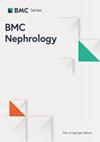Comprehensive analysis of LD-related genes signature for predicting prognosis and immunotherapy response in clear cell renal cell carcinoma
IF 2.2
4区 医学
Q2 UROLOGY & NEPHROLOGY
引用次数: 0
Abstract
Lipid droplets (LD) in renal clear cell carcinoma (ccRCC)play a crucial role in lipid metabolism and immune response modulation. The purpose of this study was to create a LD-related signature to predict prognosis and guide the immunotherapy and targeted therapy in ccRCC patients. We conducted a comprehensive analysis using transcriptional profiles and clinical data obtained from The Cancer Genome Atlas (TCGA). LD-related genes were identified from existing literature and the GeneCards database, and differentially expressed genes were determined. Sequentially, we conducted Cox regression analysis and Lasso regression analysis, to establish a prognostic risk model. The performance of the risk model was evaluated using Kaplan–Meier (KM) analysis and time-dependent receiver operating characteristic (ROC) analysis. Additionally, gene set enrichment analysis (GSEA), ESTIMATE, CIBERSORT, and immunophenoscore (IPS) algorithm were used to assess the tumor microenvironment (TME) and treatment response. We constructed a risk signature with four LD-related genes in the TCGA dataset, which could be an independent prognostic factor in ccRCC patients. Then, patients were classified into two risk groups and exhibited notable differences in overall survival (OS), progression-free survival (PFS), and TME characteristics. Furthermore, we developed a comprehensive nomogram based on clinical features, which demonstrated good prognostic predictive value. According to the results of GSEA analysis, immune-related pathways were found to be significantly enriched in the high-risk group. Additionally, the high-risk group displayed high levels of immune cell infiltration, TMB and IPS scores, indicating better efficacy of immune checkpoint inhibitors (ICIs). Finally, high-risk demonstrated reduced IC50 values compared to the low-risk counterpart for specific targeted and chemotherapeutic drugs, suggesting that the patients receiving these targeted drugs in high-risk group had better treatment outcomes. Our findings suggested that the LD-related gene signature could potentially predict the prognosis of ccRCC patients. Additionally, it showed promise for predicting responses to immunotherapy and targeted therapy in ccRCC patients. These insights might potentially have guided the clinical management of these patients, but further validation and broader data analysis are needed to confirm these preliminary observations.预测透明细胞肾细胞癌预后和免疫疗法反应的 LD 相关基因特征综合分析
肾透明细胞癌(ccRCC)中的脂滴(LD)在脂质代谢和免疫反应调节中起着至关重要的作用。本研究的目的是建立脂滴相关特征,以预测预后并指导ccRCC患者的免疫疗法和靶向疗法。我们利用从癌症基因组图谱(TCGA)中获得的转录图谱和临床数据进行了综合分析。我们从现有文献和GeneCards数据库中找出了与LD相关的基因,并确定了差异表达基因。我们依次进行了 Cox 回归分析和 Lasso 回归分析,以建立预后风险模型。风险模型的性能通过卡普兰-梅耶(KM)分析和时间依赖性接收器操作特征(ROC)分析进行评估。此外,我们还使用了基因组富集分析(GSEA)、ESTIMATE、CIBERSORT和免疫表观评分(IPS)算法来评估肿瘤微环境(TME)和治疗反应。我们利用 TCGA 数据集中的四个 LD 相关基因构建了一个风险特征,这可能是 ccRCC 患者的一个独立预后因素。然后,患者被分为两个风险组,并在总生存期(OS)、无进展生存期(PFS)和TME特征方面表现出显著差异。此外,我们还根据临床特征制定了一个综合提名图,该提名图显示了良好的预后预测价值。根据GSEA分析结果,免疫相关通路在高危组中明显富集。此外,高危组的免疫细胞浸润、TMB和IPS评分水平较高,表明免疫检查点抑制剂(ICIs)的疗效更好。最后,与低风险组相比,高风险组的特定靶向药物和化疗药物的IC50值降低,这表明接受这些靶向药物治疗的高风险组患者的治疗效果更好。我们的研究结果表明,LD相关基因特征有可能预测ccRCC患者的预后。此外,它还有望预测ccRCC患者对免疫疗法和靶向疗法的反应。这些见解有可能为这些患者的临床治疗提供指导,但还需要进一步的验证和更广泛的数据分析来证实这些初步观察结果。
本文章由计算机程序翻译,如有差异,请以英文原文为准。
求助全文
约1分钟内获得全文
求助全文
来源期刊

BMC Nephrology
UROLOGY & NEPHROLOGY-
CiteScore
4.30
自引率
0.00%
发文量
375
审稿时长
3-8 weeks
期刊介绍:
BMC Nephrology is an open access journal publishing original peer-reviewed research articles in all aspects of the prevention, diagnosis and management of kidney and associated disorders, as well as related molecular genetics, pathophysiology, and epidemiology.
文献相关原料
| 公司名称 | 产品信息 | 采购帮参考价格 |
|---|
 求助内容:
求助内容: 应助结果提醒方式:
应助结果提醒方式:


